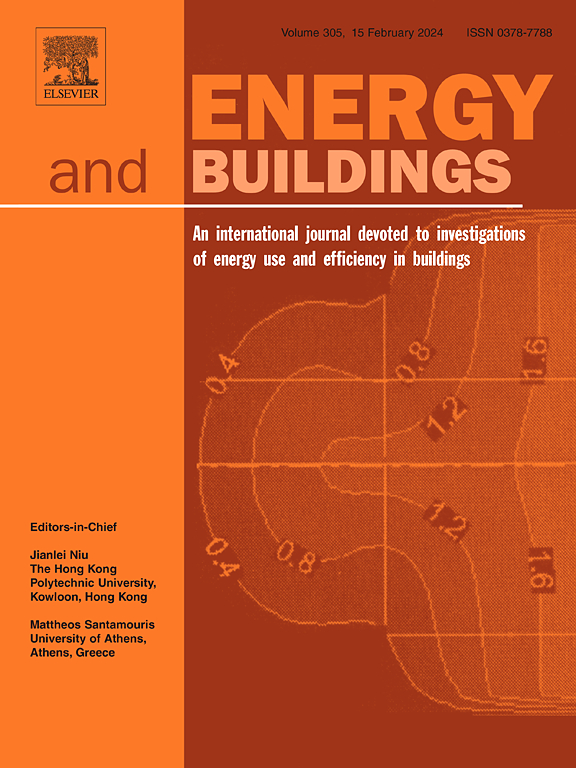Vision-based personal thermal comfort modeling under facial occlusion scenarios
IF 6.6
2区 工程技术
Q1 CONSTRUCTION & BUILDING TECHNOLOGY
引用次数: 0
Abstract
Personal thermal comfort modeling can accurately identify the transient thermal comfort states of individuals, facilitating occupant-centric indoor thermal comfort regulation. Facial temperature is the important data source for developing personal thermal comfort model. However, facial occlusion often occurs in daily life, such as wearing eyeglasses or masks, would hinder the acquisition of facial temperature. Previous studies have ignored the facial occlusion scenarios, which narrowed the application scope of the model. This study proposed a method fusing visible and infrared images to fill this knowledge gap. Firstly, the facial occlusion scenarios and corresponding Regions of Interest (ROIs) were recognized from the visible images based on YOLOv8 and FaceMesh. Secondly, the coordinates of ROIs were mapped from visible images onto the infrared images, and the temperature features of each ROI were calculated. Finally, Random Forest (RF) algorithm-based models were developed to predict the subjective thermal comfort indices. 3029 sets of data were collected in the experiment to verify the prediction models under four facial occlusion scenarios (i.e., without occlusion, wearing eyeglasses, wearing mask, wearing both). The results showed that: (1) the accuracy of the proposed prediction models was improved by 3.30% to 14.17% compared with the baseline model based on environmental parameters, (2) temperature features of hand and median temperature feature type were important for personal thermal comfort modeling, and (3) the addition of air temperature and subjects’ Body Mass Index (BMI) could significantly improve the model performance by 6.34% and 5.39%.
求助全文
约1分钟内获得全文
求助全文
来源期刊

Energy and Buildings
工程技术-工程:土木
CiteScore
12.70
自引率
11.90%
发文量
863
审稿时长
38 days
期刊介绍:
An international journal devoted to investigations of energy use and efficiency in buildings
Energy and Buildings is an international journal publishing articles with explicit links to energy use in buildings. The aim is to present new research results, and new proven practice aimed at reducing the energy needs of a building and improving indoor environment quality.
 求助内容:
求助内容: 应助结果提醒方式:
应助结果提醒方式:


